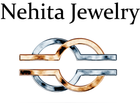Diamonds
Diamonds are graded using the 4C’s grading system to determine quality. The cut, color, clarity and carat. The 4C’s makes each diamond unique. No two diamonds are exactly alike. Before purchasing a diamond it is important that you familiarize yourself with the 4C’s cut. The cut grade indicates whether the diamond was cut to maximize sparkle. When we speak of cut we are more interested in the proportions of the diamond as opposed to its shape (Round Brilliant, Marquise, Pear, Princess, etc.) The most popular diamond cut shape is the round. Other cut shapes including princess, marquise, oval, emerald, pear, radiant, heart, cushion and asscher are considered fancy cut.
Diamond Dept
Depth refers to the distance of the diamond from the culet to the table when viewed from the side.
Color
Color grade refers to the whiteness of the diamond or its lack of color. Diamonds come naturally in different colors. The Gemological Institute of America (GIA) rates the body color in white diamonds from D (colorless) to Z (light yellow). Color is easily detectable by the eye.

Clarity
The clarity of a diamond is determined by the amount inclusions found within the diamond and the location of flaws, or blemishes, in the diamond when viewed under 10 power (10x) magnification. Most diamonds contain very tiny inclusions. The fewer the inclusions, the more beautiful the diamond will be.
GIA DIAMOND CLARITY SCALE

Carat Weight
This is the weight of a diamond measured in carats. As the carat weight of a diamond increases so does its rarity and therefore its price. One carat is divided into 100 "points," so that a diamond of 75 points weights .75 carats. The carat-weight of a diamond is the easiest measurement to determine. Most importantly, two diamonds can be of equal carat-weight, but their value can differ greatly due to their cut, color, and clarity.
Diamond Carat Size Chart

Diamond price increases with diamond carat weight, because larger diamonds are more rare and more desirable. It's important to remember that a diamond's value is determined using all of the 4Cs, not just carat weight.
Cleaning
A regular professional cleaning is a good idea. Not only does it keep your jewelry looking its best, it also ensures that a trained professional takes a look at it at least once a year, allowing for the earliest possible detection of wear or damage. For diamonds, use a soft-bristled non-metallic brush and a mild ammonia and water solution. Gently scrub away any grime, especially around the prongs or setting where buildup is likely. Even a clean looking diamond often has a thin layer of skin oil and will shine better after a cleaning. Avoid touching the diamond as much as possible.
